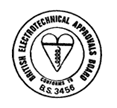Fire Safety in the Home
Use this guide to assess fire safety in your home and take simple, inexpensive precautions that could save lives. It’s worth investigating every room of your house specifically to check for fire risks.
Plan in advance
Smoke alarms
A smoke alarm is the simplest single step you can take to cut the risk of dying from fire in your home. They are available in supermarkets and high street shops. If your home covers more than one floor, you should fit at least one smoke alarm on each floor. You should:
- fit smoke alarms on each level in your home on the ceiling and in hallways and landings
- keep them free from dust and test them once a week
- consider buying a 10 year alarm; otherwise, change the batteries in your alarms every year
Some local Fire and Rescue Services install smoke alarms free of charge. You can contact yours to see if they run such a scheme.
Be careful with fire hazards
There are several fire hazards likely to be in your home that you may not immediately think of, but which you should consider.
Danger points to consider:
- is your upholstered furniture fire-resistant? If it was made before 1988, it won't be, meaning it can catch light easily and will produce clouds of poisonous smoke
- take extra care in the kitchen (especially when cooking with hot oil) - accidents while cooking account for over half of all fires in the home
- keep your cooker clear of flammable objects, such as cloths, oven gloves and curtains
- never leave young children alone in the kitchen
- make sure your toaster is cleaned out from time to time (as bread caught inside can catch fire) and that it's away from your curtains
- never leave lit candles in rooms that nobody is in, or where children are on their own
- make sure candles are in secure holders on a surface that doesn't burn and are away from any materials that could burn
- make sure cigarettes are stubbed out properly and thrown away carefully - and never smoke in bed
- if you have an electric blanket, make sure it isn't damaged - fraying, scorch marks and loose connections are all dangerous
Flammables
Don't keep flammable materials like solvents (such as some glues and aerosols) or paraffin in direct sunlight or near any other heat source (like a radiator or heater). If you're using something flammable, make sure the room you're in is well ventilated and don't light any sort of flame nearby.
Gas fires and carbon monoxide poisoning
You can't see, taste, or smell it, but carbon monoxide (CO) can kill without warning in a matter of hours. You should ensure that your gas appliances and flues have been properly installed, and are kept well-maintained and properly ventilated. The Health and Safety Executive publishes a leaflet about gas safety (CLICK TO VIEW).
Plan your escape
You should talk to everyone in your home about how you will get out if there is a fire. Make an escape plan for your house and put a reminder of what to do somewhere it's easily and regularly seen - on the fridge door, for example.
Keep exits clear
- make it a habit to keep the exits from your home clear, so that people can escape if there's a fire
- make sure that everyone in your home can easily find the keys for doors and windows - always keep them in the same place
Develop good habits
If you make fire safety checks regularly, they will soon become habits and reduce the fire risks around your home. Follow the link below for a list of quick tips and bedtime checks you should complete. You can also download a fire safety in the home leaflet by following the link below.
Kitchen safety
Nearly two-thirds of all domestic fires start because of something to do with cooking. This is a guide to how to keep safe while cooking - and what to do if a fire does start in your kitchen.
Make your kitchen safe
The cooker
- keep electrical leads from trailing over or going near the cooker
- don't hang tea-towels or cloths on or over the cooker and don't put oven gloves down on the cooker after you've used them
- keep the oven, hob and grill clean as a build-up of fat and bits of food can start a fire
- don't leave pans on the hob when you're not around - take them off the heat if you have to leave the kitchen (even if you think it will only be for a moment, while you answer the door or phone)
- turn saucepans so the handles don't stick out over the edge of the hob or over another ring
- double check that the cooker is off when you have finished cooking
- clean your grill pan after using it
- don't cook if you're affected by alcohol or prescription drugs
The toaster
Check that the toaster is clean and well away from curtains and empty the crumb tray regularly.
The microwave
Don't put anything in the microwave that is made of metal, or has a metallic finish or parts, and don't dry clothes in the microwave.
Deep-fat frying
Deep-fat frying presents more dangers in your kitchen. Follow these tips for safer deep-frying:
- never fill a chip pan (or other deep-fat fryer) more than one-third full of oil
- consider using a thermostatically controlled deep-fat fryer - this will ensure that the fat does not get too hot
If you do have a chip pan fire:
- call 999 immediately
- never move the pan
- turn off the heat - only if it's safe for you to do so
- never use water on chip pan fires as this will cause a fireball
Ventilation
Check regularly that the ventilation in your kitchen is working properly and is not blocked up, especially if you have a gas cooker.
Protection
- buy a smoke alarm fitted with a 'hush button', so if it goes off accidentally you can silence it instantly and aren't tempted to remove the battery (except to change it for a new one)
- consider having a fire blanket in your kitchen - mounted on the wall - where you can get to it easily and quickly
Electrical items in the kitchen
- keep electrical leads away from water
- don't put a plant pot or anything wet on top of an electrical appliance
- don't overload sockets - one plug per socket is the rule, especially if the appliance takes a lot of power (like a kettle)
- don't run extension cables across the floor, as they can become worn
- electrical appliances - especially those that work at high speeds, such as the washing machine - should be serviced each year
- don't leave appliances such as washing machines or dishwashers on at night
- check that your kettle is not leaking - this can be dangerous
Dealing with a fire in your kitchen
If you do have a fire in the kitchen, don't take any risks - get everyone out of your home and call 999.
If a pan catches fire:
- don't move it - it is likely to be extremely hot
- turn off the heat if it's safe to do so - but never lean over a pan to reach the controls
- if you have a fire blanket, put it over the pan
- don't use a fire extinguisher on a pan of oil - the force of the extinguisher can spread the fire
- if you have put the fire out, leave the pan to cool completely
If you have an electrical fire in the kitchen:
- pull the plug out, or switch off the power at the fuse box - this may be enough to stop the fire immediately
- smother the fire with a fire blanket, or use a dry powder or carbon dioxide extinguisher
- remember - never use water on an electrical fire
Smoking safety
More people die in fires caused by smoking than in fires caused by anything else. Tobacco is manufactured to stay alight, meaning it can remain smouldering and start a fire.
Safety tips if you smoke
- never smoke in bed - it's very easy to fall asleep and allow your cigarette to set light to your bedclothes or furnishings
- don’t smoke if you’re drowsy - especially if you're sitting in a comfortable chair or if you've been drinking or taking prescription drugs; again, it’s easy to fall asleep
- don’t leave a lit cigarette (or cigar or pipe) - they can easily overbalance and land on the carpet or other flammable material; and make sure your ashtray is heavy and can’t tip easily
- make totally sure that your butts (and any remains in your pipe bowl) aren’t still smouldering when you’ve finished with them; wet them and empty your ashtray into a metal bin outside the house
- keep lighters, matches and smoking materials out of the reach of children - you can also buy child-resistant lighters and containers for matches
Electrical safety
Electricity is used throughout our homes - but appliances, plugs and cables that are old or poorly wired can be a real danger. Just because there is no flame doesn’t mean there is no fire risk.
What to check for
There are particular danger signs you should look out for on all the electrical items you have around your home:
- hot plugs and sockets, fuses that blow frequently, flickering lights and scorch marks on sockets or plugs; these are all signs of loose wiring or other problems that should be fixed
- badly wired plugs - if you can see the coloured wires sticking out, they can come loose and debris can also get into the plug
- frayed power leads - the outer covering of all power leads should be in good condition and not damaged
- repaired power leads - split or frayed leads should not just be taped over as this is not a secure repair; they should be replaced
- overloaded sockets - too many electrical appliances plugged into one socket or adapter can overload it, which will lead to overheating
- badly positioned cables - they should not be anywhere they could be tripped over, or near to water, or close to cookers or other sources of heat; and don’t run them under rugs or carpets where they can wear through without anyone noticing
- water near electrical items - cables and plugs should never be in danger of getting wet; so don’t put a vase of flowers on the TV, for example
Keep electrical items in good working order
Follow these guidelines to keep your electrical items safe to use:
- maintenance - electrical appliances (especially ones that run at high speeds and contain motors, like the washing machine) should be serviced once a year by an electrician
- wire plugs carefully - the outer covering of the power lead should go inside the plug and be secured there; all the wires inside should be held firmly in place
- use sockets safely - it’s better to use a bar adaptor on a lead than a block adaptor; only use one adaptor per socket and don’t plug an adaptor into an adaptor.
- don’t allow the total current used by the appliances plugged into the adaptor to add up to more than 13 amps all together
- throw away damaged cables - if a lead has a crack or hole in it, stop using it; it’s safer to replace, rather than repair
- turn off and unplug - if you’re not using electrical appliances, turn them off at the wall and unplug them (unless the appliance is designed to be left on, like a video player that displays the time)
- use the right fuses in your plugs - they are designed to stop overheating; follow the guidance below to find the right one
Appliances up to:
700 watts = 3 amp fuse. 700 -1000 watts = 5 amp fuse. 1000 + watts = 13 amp fuse.
Electric heaters
Plug-in heaters use a lot of electricity and generate a lot of heat. This means they can be dangerous if they are not used correctly. You should:
- keep them clear of curtains and furniture
- only sit at least three feet (one metre) away from them
- buy them from reputable shops
- never dry washing on or near them (or on fireguards)
Electric blankets
Your electric blanket should carry the British Standard Kitemark and the British Electrotechnical Approvals Board (BEAB) symbol on it, showing it meets safety and quality standards.
If your blanket (or its flex) shows any of these danger signs, you should have it checked or replaced:
- the old BEAB safety mark (a round symbol, pictured) means it's over 10 years old and should be replaced

- scorch marks
- exposed elements
- creasing or folding
- soiling or damp patches
- missing or damaged tie tapes
- loose connections
- fraying fabric or a worn flex
You should replace your electric blanket at least every 10 years. Never buy one second-hand and always check for the British or European standard and the certification marks mentioned above. Also make sure it has overheating protection.
You shouldn’t fold electric blankets to store them, as this can damage the wiring. It’s better to roll them - or keep them on a spare bed. An electric underblanket can be left on your bed all year, whether you are using it or not.
Here are some further safety tips:
- always follow the manufacturer’s instructions
- never use an underblanket as an overblanket (or vice-versa)
- keep all electric blankets flat or rolled to store
- tie electric underblankets to the bed or mattress as this stops them slipping and creasing, which could cause damage
- only leave a blanket switched on all night if it has thermostatic controls for safe all-night use - otherwise, switch it off and unplug it before you get into bed
- don’t get blankets wet; and if your blanket does get wet, don’t use it - never switch it on to dry it
Dealing with an electrical fire
Only if it is safe to do so, pull the plug out, or switch off the power at the fuse box - sometimes this can stop the fire immediately. Never use water on an electrical fire and don't take any risks - get everyone out and dial 999
J C Beachey
info@blaenavonlink.uk
Please sign my Guestbook ... Thanks!
View my Guestbook
Free Guestbooks by Bravenet.com
Calendar and information about Blaenavon. It contains useful information and links for all.

Events are listed on the Facebook Page “Blaenavon Events Page”

